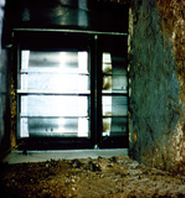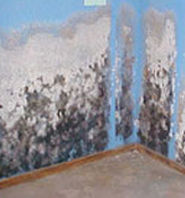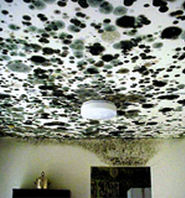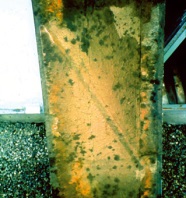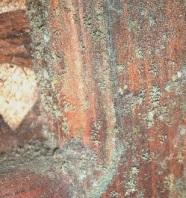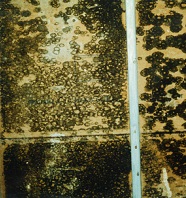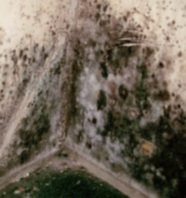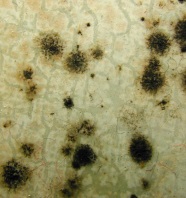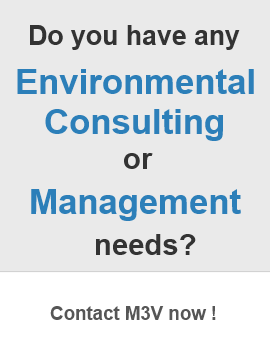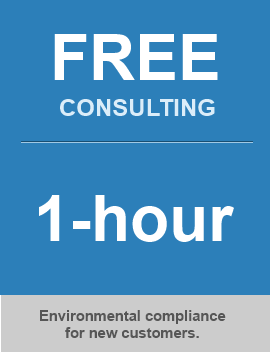Common Mold Related Questions
What is mold and where is it found?
Mold (fungi) is present everywhere - indoors and outdoors. There are more than 100,000 species of mold, out of which at least 1,000 species are common in the U.S. Some of the most commonly found are species of Cladosporium, Penicillium, and Aspergillus. Mold is most likely to grow in wet areas of buildings such as in bathrooms and basements.
How can mold affect your health?
Most types of mold that are routinely encountered are not hazardous to healthy individuals. However, too much exposure to mold may cause or worsen conditions such as asthma, hay fever, or other allergies. The most common symptoms of overexposure are cough, congestion, runny nose, eye irritation, and aggravation of asthma. Depending on the exposure and a person's vulnerability, more serious health effects - such as fever and breathing problems - can occur.
How can you be exposed to mold?
When moldy material becomes damaged or disturbed, spores (reproductive bodies similar to seeds) can be released into the air. Exposure can occur if people inhale the spores, directly handle moldy materials, or accidentally ingest it. Also, mold can sometimes produce chemicals called mycotoxins. Mycotoxins may cause illness in people who are sensitive to them, or if they are exposed to large amounts in the air. Mycotoxins are secondary fungal metabolites that are toxic when consumed by animals and humans. Mycotoxins are not considered a chemical because they have no molecular features in common; instead, the chemical features are diverse and include polyketides, terpenes, and indoles. Large exposures are typically associated with certain occupations (e.g., agricultural work).
How does mold grow?
Molds need moisture and organic materials to grow. Mold can grow in places where there is high humidity, or dampness. Mold multiplies through spores that are reproductive bodies similar to seeds. Mold spores are everywhere: air, cloths, carpet, food, etc. When mold spores land on a damp spot indoors, they may begin growing and digesting whatever they are growing on in order to survive (wood, paper, carpet, and foods). Spores can stay dormant in dry places for long time. Most often molds are confined to areas near the source of water. Removing the source of moisture - such as through repairs or dehumidification - is critical to preventing mold growth.
What is Stachybotrys chartarum?
Stachybotrys chartarum (also known as Stachybotrys atra) is a type of mold that has been associated with health effects in people. It is a dark colored mold that can grow on materials with a high cellulose content - such as drywall sheetrock, ceiling tiles, and wood. Such materials can become chronically moist or water-damaged due to excessive humidity, water leaks, condensation, or flooding.
How to find out if mold is living in your home, office, or building?
There are numerous ways to test for mold. If you can see mold, or if there is an earthy or musty odor, you can assume you have a mold problem. The first step is to identify the moisture source and correct it.
Mold can grow in vast quantities behind walls, and it may not show up in air sampling, because spores may not be airborne at the time of sampling. Some samplers cannot detect dead spores, which can also be a health threat. But, if there is mold growth in a building, a knowledgeable investigator using a good lab can usually detect it.
Before hiring a building investigator, ask about their training in indoor air, particularly in mold sampling. What special training and experience have they acquired for investigating mold in buildings? How will they determine if sampling is appropriate? How many types of samples are they trained to take? Do they use a laboratory accredited for environmental microbiology? Do not let the investigator take too many samples. Sometimes you can take a decision to abate without any sample. Test results should say whether there is evidence of mold growth in a building and what kinds of mold have been found, rather than providing mold counts, which alone are useless. A good sampling report should assist you with the results interpretation and abatement decision.
What should you do if mold is present in your home, office or building?
First identify and fix your moisture problem. Then, depending on the size of the moldy area you can do the mold remediation in house (for small areas) or seek professional assistance (for larger areas). An extended area may require negative pressure total containment and special protective equipment. The most effective way to treat mold is to correct the moisture source and clean the affected area.
How should mold be cleaned?
Mold should be cleaned as soon as it appears. Persons cleaning mold should be free of symptoms and allergies. Small areas of mold should be cleaned using a detergent/soapy solution or an appropriate household cleaner. Gloves and eye protection should be worn during cleaning. The cleaned area should then be thoroughly dried. Dispose of any sponges or rags used to clean mold. If the mold returns quickly or spreads, it may indicate a moisture problem such as a leak. Any moisture problems must be fixed to successfully eliminate mold problems. If mold contamination is extensive, a professional abatement company may need to be consulted.
Q: Can you keep mold out?
Keeping buildings and the air in them dry can prevent mold growth and the illnesses associated with it -- ideally, indoor relative humidity should be kept below 60 percent. A dehumidifier will keep the humidity in the air low, but if it is not cleaned frequently, it can become a source of mold contamination itself. Any significant areas of mold growth found inside a building should be removed, not just killed, by trained individuals wearing proper protective clothing and equipment. The larger the area, the more caution is required.
Is dead mold still dangerous?
Dead molds are just as undesirable as live molds; they can still cause illnesses. Removing molds (dead and alive) is more important than killing them.
Are you sure the mold is "dead"? Mold spores can survive thousands of years. Don't risk the harmful effects of living mold.

